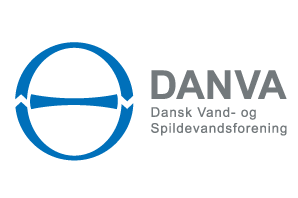Tools to combat odour and corrosion in sewer networks
Session
Resumé
Odour nuisance and corrosion problems in sewer networks are some of the major issues for wastewater utilities. The cause of these problems is mainly linked to hydrogen sulphide, which is produced by anaerobic processes in the network – typically during long hydraulic transport time and oxygen free conditions in pressurized pipes. The first results obtained by a novel sensor with the ability to measure dissolved hydrogen sulphide in sewage combined with dynamic hydrogen sulphide sewer network modelling are presented. The described solution of combining real-time dissolved sulphide monitoring and sewer network modelling enables water utilities, local and national authorities, and consultants to manage and control the hydrogen sulphide formation in a complex and highly dynamic sewerage network more efficiently.
Målgruppe
Abstract
In recent years, a strong tendency to centralize wastewater treatment plants has been seen in order to reduce costs and increase resource recovery. Therefore, smaller treatment plants are replaced by pumping stations for pressurized sewer networks to the main wastewater treatment plant (WWTP). One drawback of this development is the occurrence of anaerobic processes in the biofilm of the pressurized pipes leading to sulphide production and downstream odour and corrosion problems in the concrete gravitational sewerage network.
The odour in the cities caused by the formation of hydrogen sulphides is of nuisance to the general public living and below desired standards of services. If the hydrogen sulphide concentrations become high in the gaseous phase it furthermore poses a hazardous problem for the network maintenance crew. The corrosion of the sewer infrastructure can require premature repair or replacement of concrete pipes, manholes, wet wells, pump stations, pump equipment and WWTP facilities. Every year large sums are used in wastewater utilities for handling these problems e.g. by dosing chemicals such as nitrate or iron salts. On a global scale, costs related to the mitigation of odour and corrosion damages exceed approximately 50% of the overall sewer rehabilitation costs.
Here we present the first results obtained by a novel sensor with the ability to measure hydrogen sulphide dissolved in the wastewater. Expanding the modelling capabilities with the new sensor data allows the hydrogen sulphide formation processes to be controlled beyond standard chemical dosing. The integrated model solution supports the simulation of various mitigation options including chemical dosing, oxygen injection and advanced pump operation. With the combination of novel sensors with a fully dynamic hydraulic and water quality model to identify areas with increased risk of formation of hydrogen sulphide odour and corrosion, new opportunities for real-time optimization of odour handling and for long-term maintenance planning of the network are emerging. By identifying an optimal citywide mitigation strategy, including dosing facility locations and sizing, chemicals and dosing profiles, future installation and chemical costs can significantly be reduced.
The combination of real-time sensors and online modelling solution is currently tested in a DANVA-funded project through the VUDP foundation focussing on sulphide handling through measurements, modelling and coating technologies. The project group consists of the companies Unisense, Bollerup-Jensen, DHI, the academic institution University of Aalborg and the two utility companies Vejle Spildevand and Hedensted Spildevand.

